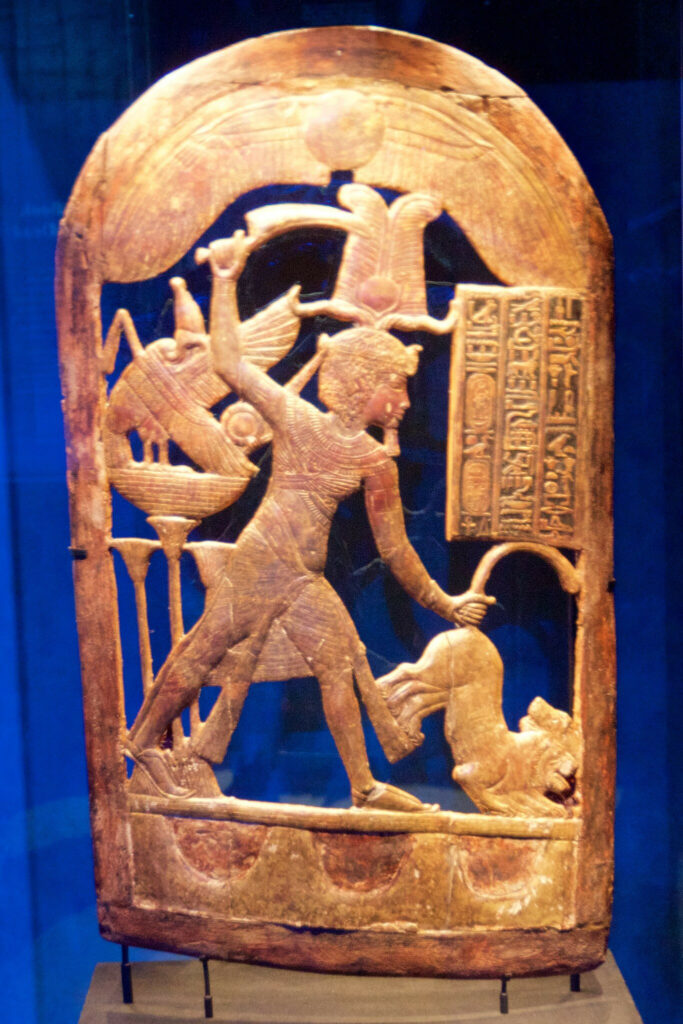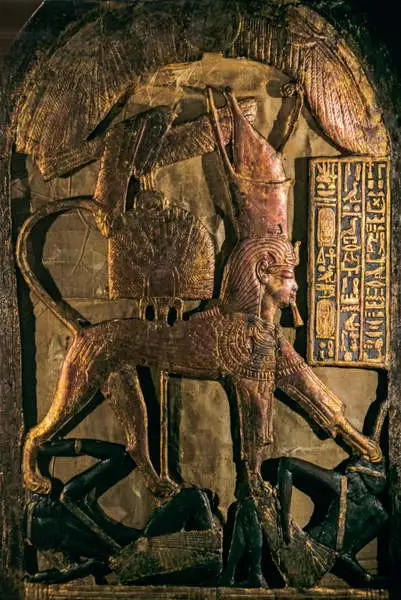Unearthing Treasures from the Tomb of the Boy King
Deep within Tutankhamun’s tomb, archaeologists stumbled upon an extraordinary find: eight shields, among which four were remarkable ceremonial works of art. These elaborate artifacts, meticulously crafted from openwork wood, featured intricate carvings and gilding, showcasing the exceptional skill of ancient Egyptian artisans.

A Shield That Narrates a Story
The Winged Guardian and the Victorious Pharaoh
One particular shield captivates the imagination. At its pinnacle, a winged sun disk arches elegantly, symbolizing divine safeguarding for the youthful king below. Tutankhamun is depicted in a commanding stance, wielding a formidable scimitar in one hand while gripping the tails of two lions in the other—a powerful emblem of Egypt’s defeated foes.

Protectors of the Nation
Enhancing the shield’s symbolic significance, the vulture goddess Nekhbet unfurls her protective wings behind the pharaoh. This divine figure underscores Tutankhamun’s position as Egypt’s divinely chosen leader. Below these central images, an ornamental band evokes the rugged desert mountains, anchoring the scene in Egypt’s distinctive landscape.
A Second Shield: The Sphinx Victorious
Emblems of Unity and Conquest
Another ceremonial shield conveys a different yet equally intriguing narrative. This wooden masterpiece, adorned with gilded stucco and inlaid with sumptuous ebony, portrays Tutankhamun as a human-headed sphinx. Donning the combined crowns of Upper and Lower Egypt, this king-sphinx tramples upon southern adversaries, likely symbolizing Nubian foes.

Divine Endorsement and Eternity
Behind this striking depiction of the king, a mysterious visage emerges, topped by a hawk grasping the shen sign—a symbol of eternity. The entire tableau is crowned by the recognizable winged solar disk, reinforcing themes of divine protection and royal power.

A Legacy Preserved
These stunning shields, dating back to the late 18th Dynasty (approximately 1332-1323 BC), provide insight into the intricate symbolism and unmatched craftsmanship of ancient Egypt. Unearthed from the renowned KV62 tomb in the Valley of the Kings, they now reside in the Grand Egyptian Museum, continuing to enchant visitors with their beauty and historical importance.


